PungoteagueDave
Well-known member
Yes, because they are also used to tow the toys on weekends.yes i was thinking about soccer moms going grocery shopping
Sponsored
Yes, because they are also used to tow the toys on weekends.yes i was thinking about soccer moms going grocery shopping
Which is 90% of "real truck drivers"yes i was thinking about soccer moms going grocery shopping
They do where I live in Texas.Do most people need a truck "around town"? unless they are a delivery company.
Once again, the same limitations on every current EV is going to inform how Ford decides to equip the Lightning.
Li-ion battery energy densities are notably deficient compared with gasoline. The gasoline engine has the advantage of only needing to carry 1/15th of the needed products of combustion. For every pound of gasoline burned, you're also using roughly 14 pounds of air. When you have burned through 22 gallons of gasoline, your truck is going to be 140lbs lighter and you will have sucked literally a ton of air through the intake manifold. The battery pack is going to weigh exactly the same full as empty and by it's very nature, it's going to require storing 100% of the energy used. The same as if you had to store 2,000lbs of air in your truck to burn the 22 gallons of gasoline.
To increase the range, not only would you need to increase the size of the battery to get more range but you would need to increase the size of the battery to carry around the extra weight of the battery. It would also reach the point where you have added so much battery weight to the vehicle, the range will decrease. That's not including the fact that bigger motors will be needed to move the larger battery.
If the battery weight is 1,800lbs and it has a 300 mile range, doubling that might get you an extra 100 miles because now the truck is always carrying 3,600lbs of battery weight and now you have zero payload. This is all rough guesses and assumes relatively flat terrain! I would also guess that the standard range battery weight is the same as the extended range battery, only with less expensive individual li-ion cells. Exaggerated example but probably not too far from reality, especially when steep hills are thrown in and regenerative braking can't do its part.
I don't think the battery technology is ready for replacing gasoline trucks for towing or 600 mile a day roadtrips. I don't think Ford intended to with the Lightning. However, I feel that at least half the trucks being used as daily drivers today could easily be replaced with a 100% battery powered truck and nobody would know the difference.
Anyone who is complaining about the range of any EV needs to be mindful of this and how incredible it is that the technology is competitive at all. Despite the promises of higher energy density with newer technology like solid state batteries, gasoline might never be exceeded in its current range and convenience.
There's mention of the truck only being available in Supercrew with a 5.5' bed, however, the image for the 'commercial oriented model' is unavailable at Ford.com. The difference is around $12,000 though and I wonder if it actually will be a single cab with only one motor and not as much battery pack as the XLT?
The IRS and full belly pan shows that Ford is serious. One thing that could possibly extend the range at the extent of looking odd would be full fender skirts on at least the rear. Lowering the suspension 2" and chopping the top could also eke out a few extra miles on the highway!
As of now, Cybertruck is merely a concept car and I really hope that if it does go into production, that either it's fully self driving, or the windshield is revised to provide better visibility. I have put some miles behind the wheel driving the Lotus Esprit, which has miserable visibility and I can only imagine how much worse it would be with a truck. Audi had the same problem, the engineers decided that a steep windshield angle would be best for aerodynamics. The rally drivers complained enough that the race cars had revised, less steep windshields. The less accomplished, every day drivers had to make do with the harder to see out of cars!
GM has let slip some details about the new EV Hummer and it's going to be very heavy. They have also announced that a Silverado fleet EV is in the works, they're the only ones so far with real world experience making battery electric trucks with the old school S-10 EV. GM is claiming that the fleet truck will have a 400 mile range.
Another detail to keep in mind, is just like horsepower in the 60's, the manufacturers have been fudging the numbers. Since there are various precautions on discharging a lithium ion cell below 15-20% as well as charging above 90-95% capacity. If that holds true for the Lightning, it could mean that the 300 mile range is closer to 225 miles before any miles are driven. Either that or the marketing department thinks that Ford buyers might be less EV savvy and not in on the joke, so were more conservative about their ratings. Testing in the Mach-E suggests the latter. If Ford is underrating the Lightning battery, then that's the reason for the seemingly disappointing range compared to Tesla who readily admit to using unrealistic battery range estimates.
99% of the charging infrastructure already exists and apart from the highway system, power lines have changed the landscape of this country more than anything. The addition of charging stations will be a nominal expense for the power companies if it means getting a portion of the cash that gas stations are now getting, it's much easier and cheaper to put in a charging station in a remote area than a gas station and the power supply is already there. No need for sending out tanker trucks or other support needed and while you only need twenty bucks to buy an old oil drum and steal 55 gallons of gas with a garden hose. It's a lot more expensive and I imagine slightly more sophisticated to store stolen electricity. So it's much less of a risk now to leave charging stations unattended.
Ford actually produced A Ranger EV 1998-2002Once again, the same limitations on every current EV is going to inform how Ford decides to equip the Lightning.
Li-ion battery energy densities are notably deficient compared with gasoline. The gasoline engine has the advantage of only needing to carry 1/15th of the needed products of combustion. For every pound of gasoline burned, you're also using roughly 14 pounds of air. When you have burned through 22 gallons of gasoline, your truck is going to be 140lbs lighter and you will have sucked literally a ton of air through the intake manifold. The battery pack is going to weigh exactly the same full as empty and by it's very nature, it's going to require storing 100% of the energy used. The same as if you had to store 2,000lbs of air in your truck to burn the 22 gallons of gasoline.
To increase the range, not only would you need to increase the size of the battery to get more range but you would need to increase the size of the battery to carry around the extra weight of the battery. It would also reach the point where you have added so much battery weight to the vehicle, the range will decrease. That's not including the fact that bigger motors will be needed to move the larger battery.
If the battery weight is 1,800lbs and it has a 300 mile range, doubling that might get you an extra 100 miles because now the truck is always carrying 3,600lbs of battery weight and now you have zero payload. This is all rough guesses and assumes relatively flat terrain! I would also guess that the standard range battery weight is the same as the extended range battery, only with less expensive individual li-ion cells. Exaggerated example but probably not too far from reality, especially when steep hills are thrown in and regenerative braking can't do its part.
I don't think the battery technology is ready for replacing gasoline trucks for towing or 600 mile a day roadtrips. I don't think Ford intended to with the Lightning. However, I feel that at least half the trucks being used as daily drivers today could easily be replaced with a 100% battery powered truck and nobody would know the difference.
Anyone who is complaining about the range of any EV needs to be mindful of this and how incredible it is that the technology is competitive at all. Despite the promises of higher energy density with newer technology like solid state batteries, gasoline might never be exceeded in its current range and convenience.
There's mention of the truck only being available in Supercrew with a 5.5' bed, however, the image for the 'commercial oriented model' is unavailable at Ford.com. The difference is around $12,000 though and I wonder if it actually will be a single cab with only one motor and not as much battery pack as the XLT?
The IRS and full belly pan shows that Ford is serious. One thing that could possibly extend the range at the extent of looking odd would be full fender skirts on at least the rear. Lowering the suspension 2" and chopping the top could also eke out a few extra miles on the highway!
As of now, Cybertruck is merely a concept car and I really hope that if it does go into production, that either it's fully self driving, or the windshield is revised to provide better visibility. I have put some miles behind the wheel driving the Lotus Esprit, which has miserable visibility and I can only imagine how much worse it would be with a truck. Audi had the same problem, the engineers decided that a steep windshield angle would be best for aerodynamics. The rally drivers complained enough that the race cars had revised, less steep windshields. The less accomplished, every day drivers had to make do with the harder to see out of cars!
GM has let slip some details about the new EV Hummer and it's going to be very heavy. They have also announced that a Silverado fleet EV is in the works, they're the only ones so far with real world experience making battery electric trucks with the old school S-10 EV. GM is claiming that the fleet truck will have a 400 mile range.
Another detail to keep in mind, is just like horsepower in the 60's, the manufacturers have been fudging the numbers. Since there are various precautions on discharging a lithium ion cell below 15-20% as well as charging above 90-95% capacity. If that holds true for the Lightning, it could mean that the 300 mile range is closer to 225 miles before any miles are driven. Either that or the marketing department thinks that Ford buyers might be less EV savvy and not in on the joke, so were more conservative about their ratings. Testing in the Mach-E suggests the latter. If Ford is underrating the Lightning battery, then that's the reason for the seemingly disappointing range compared to Tesla who readily admit to using unrealistic battery range estimates.
99% of the charging infrastructure already exists and apart from the highway system, power lines have changed the landscape of this country more than anything. The addition of charging stations will be a nominal expense for the power companies if it means getting a portion of the cash that gas stations are now getting, it's much easier and cheaper to put in a charging station in a remote area than a gas station and the power supply is already there. No need for sending out tanker trucks or other support needed and while you only need twenty bucks to buy an old oil drum and steal 55 gallons of gas with a garden hose. It's a lot more expensive and I imagine slightly more sophisticated to store stolen electricity. So it's much less of a risk now to leave charging stations unattended.
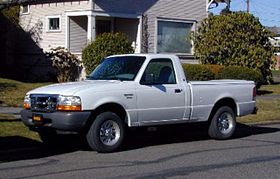
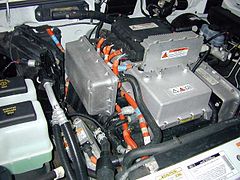
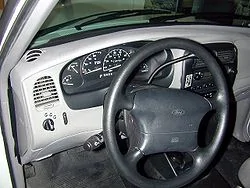

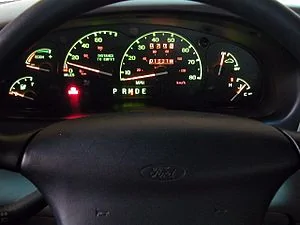
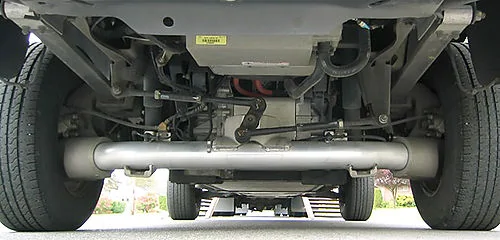
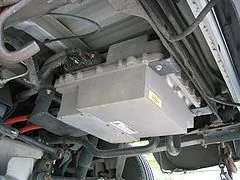
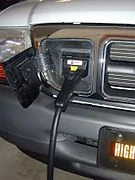
Ford actually produced A Ranger EV 1998-2002
It's cool brother, it was nearly 60k for a single cab Ranger in 1998! ?Thanks, I forgot to include the word 'consumer,' since the rangers were meant to be lease only, like many of the early EVs. I think that Ford made a bunch more of them too. That's what was implied by 'real world,' since an electric utility leasing the Ranger EV will be enjoying a far different experience than the average buyer.
Either way, I recall how enthusiasts were pissed at Ford about their trucks being selectively leased. Especially since it's not like there's a problem with finding electricity like there is for hydrogen fuel cell infrastructure. The degradation of a battery pack is pretty benign, especially compared with the specific requirements for high pressure vessels. I can see the need to control a fuel cell vehicle's life cycle but why were so many of the 90's and early 2000's battery electric vehicles only available for lease?
And that is exactly why they were leased. Ford could eat the cost with tax credits and then jack up the residual value so the lease payments were reasonable.It's cool brother, it was nearly 60k for a single cab Ranger in 1998! ?
I use my truck around town to buy lumbar for hobby woodworking, plants and dirt for landscaping, family set of bikes, kayaks, dogs, and more.Do most people need a truck "around town"? unless they are a delivery company.
This was from a YouTuber and has been denied by Ford.The estimates are based on a 1000 pound load also in the bed.
You sure about that? Everything I have seen is that Ford supports the 1000# statement. We just don’t actually know how much removing that will make a difference.This was from a YouTuber and has been denied by Ford.
TFLtruck had a video that they took down where the gist of it was the same as here:You sure about that? Everything I have seen is that Ford supports the 1000# statement. We just don’t actually know how much removing that will make a difference.
When we asked Ford about this, it declined to comment, with a company spokesperson replying in an email, "We are confirming that we have a targeted EPA estimate of 300 miles for the extended range derivative. No further detail to add at this point."






wow, this looks matte, and not like the current glossy carbonized grey F-150s. Interesting if it really is matte.Carbonized Gray





